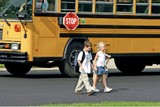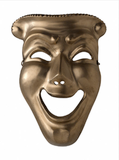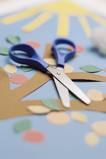Glenn Doman proposes that you can teach a tiny child absolutely anything.
But how?
Most people would argue that a one-year-old is, by default, unteachable. A three year old, in the same manner, should not be taught, it is argued, for in order to do there would be a need to apply undue pressure.
But Glenn Doman begs to differ. He believes that the younger the child, the easier they are to teach. Scientifically speaking, he is right. The brain absorbs information at far greater ease and far greater speed at the tiniest of ages. The ability to absorb raw facts is, in fact, an inverse function of age.
And as science is continuing to show, babies and tiny children not only absorb those great many facts, but they put them together in surprising and fascinating ways to form deductions, draw conclusions, and discover by experimentation the rules that govern them.
So how is it that you can teach a very tiny child?
Whether you want to teach your tiny child how to play the violin, speak Japanese, learn sign language, read, understand math, appreciate the arts or sciences, swim, do gymnastics, or whatever else you would like to teach him, these are Glenn Doman's principles for the teaching of tiny children:
1. Teach joyfully
You must approach the game of learning with the same abandonment and enthusiasm you would approach the game of patty cake or peek a boo. All children are drawn to joyousness. Your attitude towards a subject determines his. Never approach your teaching with soberness and seriousness. Learning is the greatest game you will play with your child: keep it as such. Present learning as a privilege he has earned: never, never as a chore.
2. Teach clearly
When we talk to tiny children, we naturally talk to them in a loud, clear voice. Teach your tiny child in such a voice and make your materials large and clear. Present the information in an honest, factual, and straightforward way. If you give a tiny child the facts, he will discover the rules that govern them.
3. Teach quickly
You must teach your tiny child quickly and briefly. He has much to do and can't stay in one place long. You must be content to teach him for only a few seconds at a time. That is all it takes. Present him with a set of information, and then come back to it later. When you teach in many ten- and fifteen-second sessions, you can accomplish more than you ever imagined possible.
4. Always leave him hungry for more
You must always, always, always stop before your child wants you to stop. Always stop before he wants to stop. Be sensitive to your child's attention and mood, and leave him hungry for more, every time, without fail.
5. Teach only at the best times
The key to teaching your tiny child is to only do so at the best possible times. Never try and teach him in a distracting, chaotic environment. Never try and teach him at a time when he is hungry, tired, or out of sorts. Never try and teach him when you are out of sorts. You must be ever-discerning of your child's temperament and mood and be willing to put your teaching away for the morning or day if needed.
6. Teach with consistency
If you are to be successful in teaching you must teach with consistently. If you child is to remain interested you must keep the ball rolling. Starting and stopping constantly will cause him to lose interest because he will believe the information you are bringing out again is old hat. Organize yourself to teach in such a way as to be able to remain consistent in your endeavors.
7. Teach new information
You will be surprised at how quickly your tiny child learns new information. Don't go over the same information over and over again when he already knows it. You must be keen to sense when he knows something, and regularly give him that which is fresh and new.
8. Teach as a gift
We have come to equate teaching and testing as two sides of the same coin. You must forget this notion if you are to be successful in teaching your tiny child. Teaching is the process of giving information, as you would give a gift. Testing is asking for it back. Never test your child. It is essentially disrespectful and he will sense that you don't trust that he knows the information. If he learns that your teaching always has strings attached, he will push you and your teaching away. Learning is a gift, the most precious one you can give your child. Always remember that.
And lastly, Glenn Doman's fail-safe law is this:
If you're not having a great time and your child's not having a great time, stop. You are doing something wrong.
"Whom shall he teach knowledge? and whom shall he make to understand doctrine? them that are weaned from the milk, and drawn from the breasts. For precept must be upon precept, precept upon precept; line upon line, line upon line; here a little, and there a little:"
Isaiah 28:9-10
If you would like to learn more from the source, please see Doman's How to Multiply Your Baby's Intelligence
















